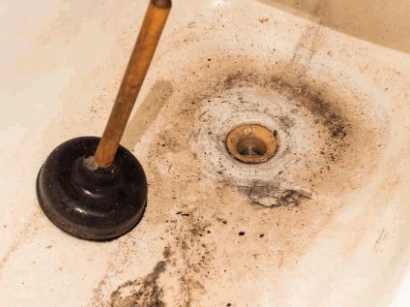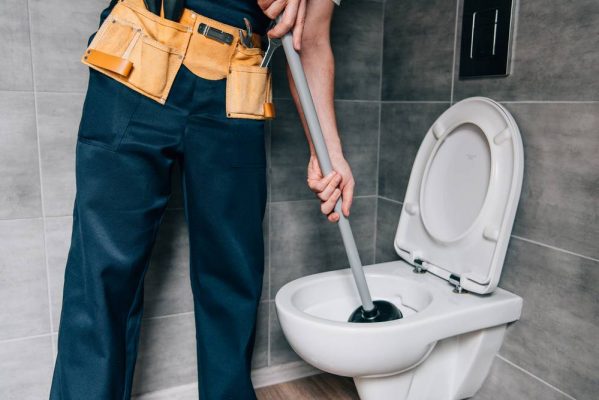Mastering Plungers and Drain Cleaner: Expert Methods
Mastering Plungers and Drain Cleaner: Expert Methods
Blog Article
How do you really feel in regards to How to Unclog Your Sink with a Plunger?

Intro
Proper upkeep of home drains pipes is crucial for stopping clogs and making certain smooth water flow. One of the trick devices in every homeowner's toolkit is the plunger, together with different drain cleansers created to deal with persistent blockages successfully. This short article checks out just how to make use of plungers and drainpipe cleaners effectively to maintain your drains streaming freely.
Area 1: Comprehending Plungers
Sorts of Plungers
There are a number of sorts of plungers readily available, each developed for different kinds of drains pipes and obstructs. The most typical kinds consist of mug plungers, flange bettors, and accordion bettors.
Exactly How Plungers Work
Plungers work on the concept of developing pressure and suction to displace blockages. When properly applied over a drainpipe, they develop a vacuum cleaner that can take out debris or separate clogs.
Selecting the Right Plunger
Choosing the right plunger relies on the kind of drainpipe and the nature of the blockage. Mug bettors are ideal for sinks and bathtubs, while flange plungers are better fit for bathrooms as a result of their layout.
Usual Errors with Plungers
Avoiding these errors makes certain reliable plunging: inappropriate seal around the drain, insufficient pressure, and not clearing surrounding debris.
Area 2: Utilizing Plungers Efficiently
Prep work
Before plunging, guarantee the bettor covers the drain completely and develops a limited seal. Clear any noticeable particles around the drain opening.
Method
Beginning with gentle diving activities to develop suction. Increase stress gradually, using a consistent rhythm. Repeat as essential till the drain removes.
Repairing Tips
If diving does not work, try adjusting the seal, applying petroleum jelly for a better seal, or using a different type of bettor.
Area 3: Recognizing Drainpipe Cleansers
Kinds Of Drainpipe Cleaners
Drain pipes cleaners can be chemical or chemical. Chemical cleansers make use of strong chemicals to liquify obstructions, while enzymatic cleansers utilize all-natural enzymes to break down organic matter.
Just How Drainpipe Cleansers Work
Chemical cleaners respond with obstructions to dissolve them, while enzymatic cleansers break down natural products like hair and grease without hurting pipelines.
Safety Factors to consider
Always wear handwear covers and eye security when making use of chemical drain cleansers. Make sure adequate air flow and adhere to maker instructions carefully.
Eco-Friendly Alternatives
Take into consideration using vinegar and baking soft drink or enzyme-based cleansers for environment-friendly alternatives that are much safer for pipes and the setting.
Area 4: Using Drainpipe Cleaning Company Effectively
Application Methods
Pour chemical cleaners directly into the drainpipe opening. Allow them to work for the recommended time before flushing with warm water. Chemical cleansers need to rest over night.
Preventative measures
Prevent mixing different sorts of cleansers, as this can create toxic fumes. Never make use of chemical cleaners in conjunction with a bettor, as splashing can take place.
Taking Care Of Stubborn Blockages
For persistent clogs, take into consideration utilizing a plumbing serpent or calling a specialist plumber to avoid damage to pipelines.
Final thought
Finally, recognizing just how to use bettors and drain cleaners properly is important for maintaining healthy and balanced pipes systems. By choosing the right tools and techniques, homeowners can tackle minor blockages and stop major pipes issues down the line.
How to Use a Plunger to Unclog a Drain
The humble plunger is a simple yet effective tool for breaking clogs in sinks, tubs and toilets. This handy tool is easy to use. You can make the most of its power if you understand how it works. Ready to dive in? Here’s what you need to know.
Safety First!
Never use a plunger with drain chemicals. Water will splash as you work, and the chemicals can spatter, burning skin and eyes. It’s a good idea to use rubber gloves and wear safety goggles when you work on a clog.
Choose the Right Tool for the Job
Plungers come in two different styles. Sinks, bathtubs and showers require a cup plunger. Like its name suggests, the rubber end is shaped like a cup. Use a flange plunger on toilets. These plungers have a rubber funnel extending from the cup. A plunger needs to be big enough to cover the drain.
Ready, Set, Plunge!
Coat the rim: Coat the plunger rim with petroleum jelly. This helps make a better seal.
Block outlets: Hold a wet rag over nearby outlets such as the overflow vent or the drain in a second sink.
Release air: Insert the plunger at an angle into the water. Water will displace air in the cup. A water-filled cup is more forceful than one filled with air.
Keep the plunger upright: Hold the plunger perpendicular to the drain. Use fast, forceful strokes, but make the first stroke gentle. The first stroke can create a splash if the cup still contains air. Thrust the plunger 15 to 20 times.
Snap off the plunger: The final stroke should be a strong upward motion that ends when the plunger snaps off the drain.
Repeat the process: you may need to repeat this sequence several times. When the water drains away, your work is done. High-five! https://plumbernw.com/blog/how-to-use-a-plunger-to-unclog-a-drain/

Application Methods
Pour chemical cleaners directly into the drainpipe opening. Allow them to work for the recommended time before flushing with warm water. Chemical cleansers need to rest over night.
Preventative measures
Prevent mixing different sorts of cleansers, as this can create toxic fumes. Never make use of chemical cleaners in conjunction with a bettor, as splashing can take place.
Taking Care Of Stubborn Blockages
For persistent clogs, take into consideration utilizing a plumbing serpent or calling a specialist plumber to avoid damage to pipelines.
Final thought
Finally, recognizing just how to use bettors and drain cleaners properly is important for maintaining healthy and balanced pipes systems. By choosing the right tools and techniques, homeowners can tackle minor blockages and stop major pipes issues down the line.
How to Use a Plunger to Unclog a Drain
The humble plunger is a simple yet effective tool for breaking clogs in sinks, tubs and toilets. This handy tool is easy to use. You can make the most of its power if you understand how it works. Ready to dive in? Here’s what you need to know.
Safety First!
Never use a plunger with drain chemicals. Water will splash as you work, and the chemicals can spatter, burning skin and eyes. It’s a good idea to use rubber gloves and wear safety goggles when you work on a clog.
Choose the Right Tool for the Job
Plungers come in two different styles. Sinks, bathtubs and showers require a cup plunger. Like its name suggests, the rubber end is shaped like a cup. Use a flange plunger on toilets. These plungers have a rubber funnel extending from the cup. A plunger needs to be big enough to cover the drain.
Ready, Set, Plunge!
Coat the rim: Coat the plunger rim with petroleum jelly. This helps make a better seal. Block outlets: Hold a wet rag over nearby outlets such as the overflow vent or the drain in a second sink. Release air: Insert the plunger at an angle into the water. Water will displace air in the cup. A water-filled cup is more forceful than one filled with air. Keep the plunger upright: Hold the plunger perpendicular to the drain. Use fast, forceful strokes, but make the first stroke gentle. The first stroke can create a splash if the cup still contains air. Thrust the plunger 15 to 20 times. Snap off the plunger: The final stroke should be a strong upward motion that ends when the plunger snaps off the drain. Repeat the process: you may need to repeat this sequence several times. When the water drains away, your work is done. High-five! https://plumbernw.com/blog/how-to-use-a-plunger-to-unclog-a-drain/

I am very involved in How To Use Your Toilet Plunger Correctly in 5 Easy Steps and I'm hoping you enjoyed the entire article. Are you aware of anybody else who is in to the topic? Feel free to share it. Thank you for taking the time to read it.
Click Here Report this page